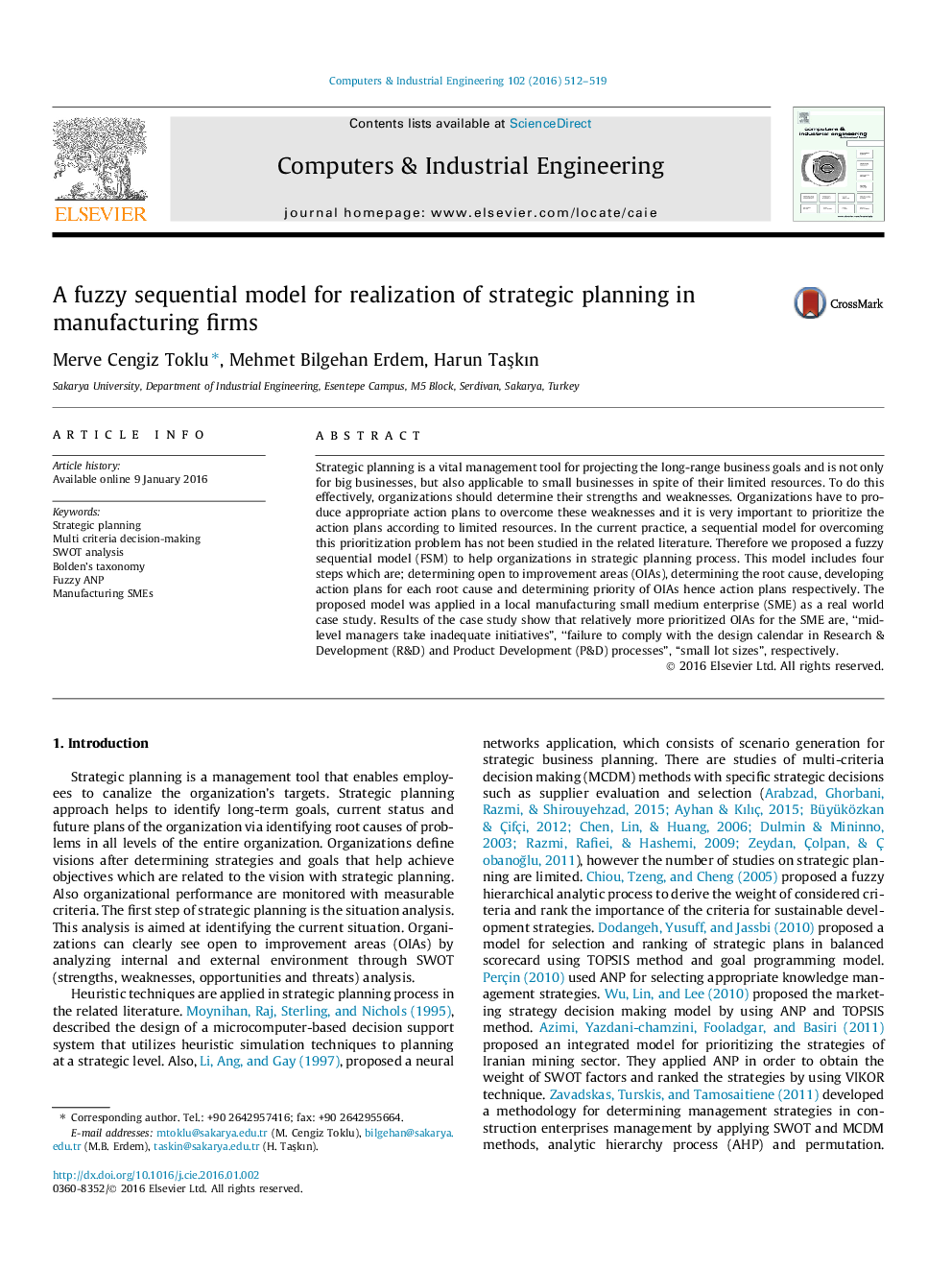| Article ID | Journal | Published Year | Pages | File Type |
|---|---|---|---|---|
| 5127973 | Computers & Industrial Engineering | 2016 | 8 Pages |
â¢A sequential model for effective resource usage realization of strategic planning.â¢Consists of four different techniques; SWOT, RCA, Bolden's taxonomy and Fuzzy ANP.â¢Applied in a local manufacturing SME.â¢Action plans are ranked due to their importance levels.â¢Suitable model for both researches and industrial practitioners.
Strategic planning is a vital management tool for projecting the long-range business goals and is not only for big businesses, but also applicable to small businesses in spite of their limited resources. To do this effectively, organizations should determine their strengths and weaknesses. Organizations have to produce appropriate action plans to overcome these weaknesses and it is very important to prioritize the action plans according to limited resources. In the current practice, a sequential model for overcoming this prioritization problem has not been studied in the related literature. Therefore we proposed a fuzzy sequential model (FSM) to help organizations in strategic planning process. This model includes four steps which are; determining open to improvement areas (OIAs), determining the root cause, developing action plans for each root cause and determining priority of OIAs hence action plans respectively. The proposed model was applied in a local manufacturing small medium enterprise (SME) as a real world case study. Results of the case study show that relatively more prioritized OIAs for the SME are, “mid-level managers take inadequate initiatives”, “failure to comply with the design calendar in Research & Development (R&D) and Product Development (P&D) processes”, “small lot sizes”, respectively.
Graphical abstractDownload high-res image (118KB)Download full-size image
